Chasing the Transylvanian Lynx, 2022
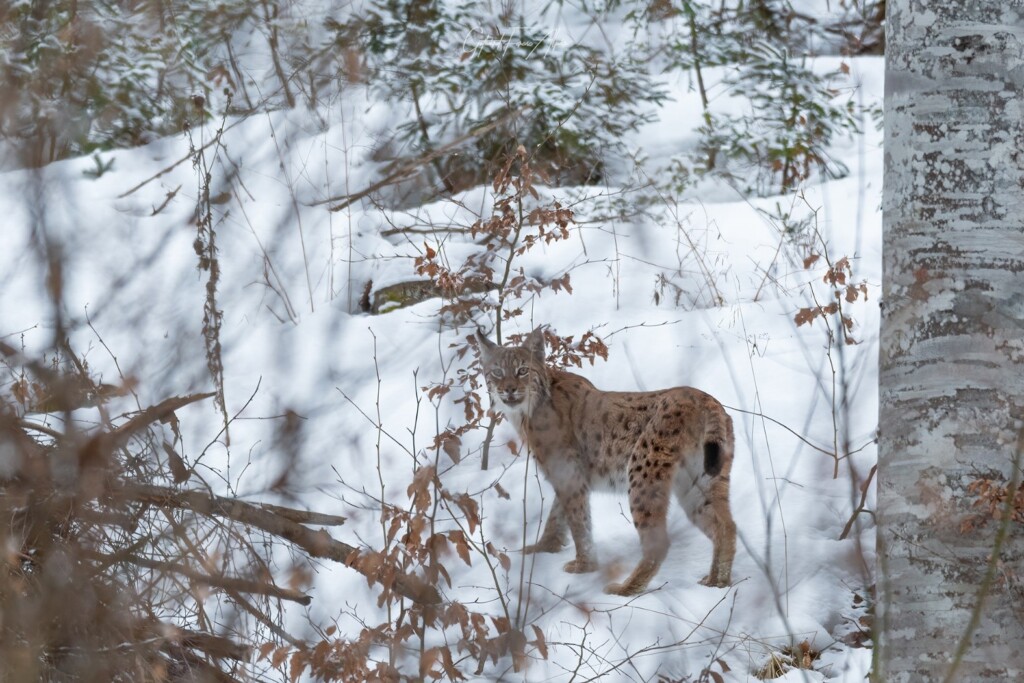
A Carpathian (Eurasian) Lynx, Lynx lynx carpathicus, taken the day before the trip began. Ferenc-Alpar Gothard (Goci).
Some of my very earliest memories are of a family road trip to the south of France. My three-year-old eyes stared out of the car window, peeled in case a Wild Boar or a Lynx leapt onto the road. I suspect there were no Lynxes in the areas we visited. But without access to a field guide I had taken my Dad’s word for it.
My longing for a Lynx has not faded with age and became a longstanding joke with my own kids. When they were very small they would entertain themselves by causally and frequently dropping a “Look Daddy, is that a Lynx?”. At which point I had to spin wildly around. This, apparently, was hysterical. Now I know what you are thinking. Some jokes are in such terrible taste they could never be funny. My kids understood full well that their behaviour was prohibited under the Geneva Convention (Crimes Against Humanity annex): they only played the game at Paris bus and metro stops.
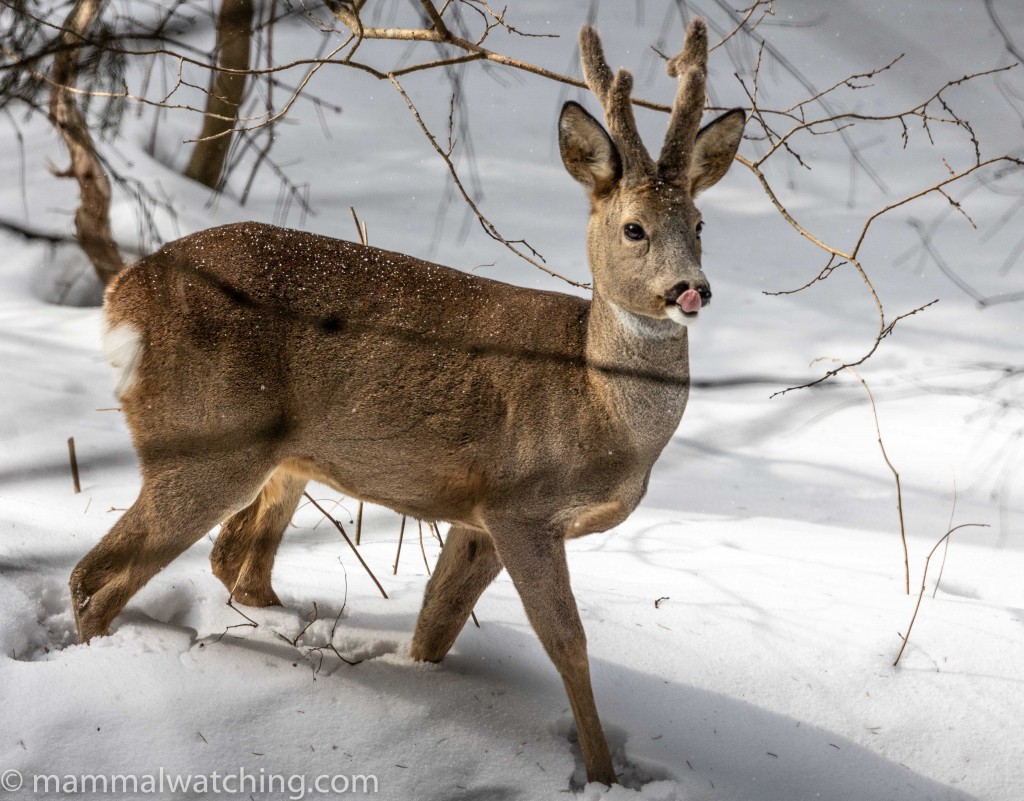
Western Roe Deer, Capreolus capreolus. Aka Lynx food.
I’ve looked for Lynxes before though I had never taken a dedicated Lynx trip. I still regret not jumping on a plane to Stockholm to see a twitchable Lynx that was hanging out near the airport for a week or more in 2011. And I have hoped to run into one in Estonia, Switzerland, Poland, Macedonia and Ladakh.
In 2020 János Oláh from Sakertours asked if I wanted to join his 2021 Lynx recce trip to Transylvania. I wasn’t able to, but I recognized in János a fellow Lynx-fanatic and so I signed up for his March 2022 trip.
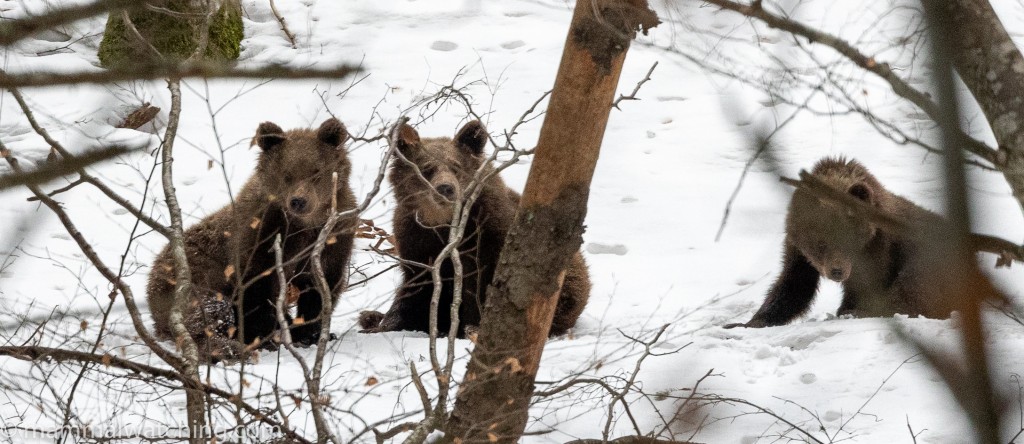
European Brown Bear cubs, Ursus arctos arctos
This trip was also my chance to see something appropriately mega as my 2000th mammal species. This was not a complete coincidence. I’d been hovering close to 2000 mammals for the past 7 months. A Ruwenzori Sun Squirrel was in danger of becoming species number 2000 in Uganda last July were it not for some creative accounting that Donald Trump’s Tax Attorney would be proud of. I began by weeding out some dodgy ticks from my lifelist. I got a little over-enthusiastic, but with the help of a few taxonomic splits, plus a Golden Mouse and Red Wolf in North Carolina, I was back at 1999 mammals by the end of February 2022.
Transylvania could be the perfect trip for number 2000. A great animal. An evocative location. And basically no chance of me seeing anything new other than a Lynx: I would not need to turn in fear if a mouse ran across the road.
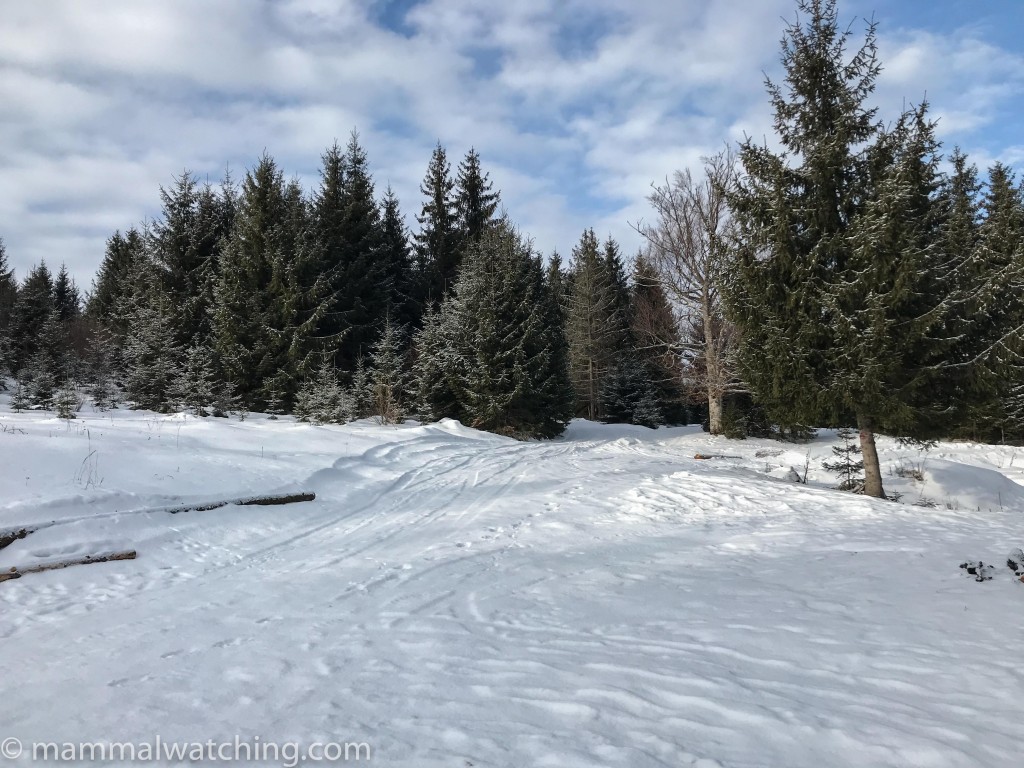
Lynx habitat
Now all I needed was a Lynx. But that was not going to be easy. I’ve given a lot of thought to Lynxes over the years. The Iberian Lynx is now relatively easy to see in Spain. The Canada Lynx is also easy every 7 years or so when Snowshoe Hare numbers are high in Denali, Alaska. More recently they have become a regular fixture in Northern Minnesota especially in late February and early March when they are mating. But the Eurasian Lynx remains very much in the hard basket.
Finding A Eurasian Lynx
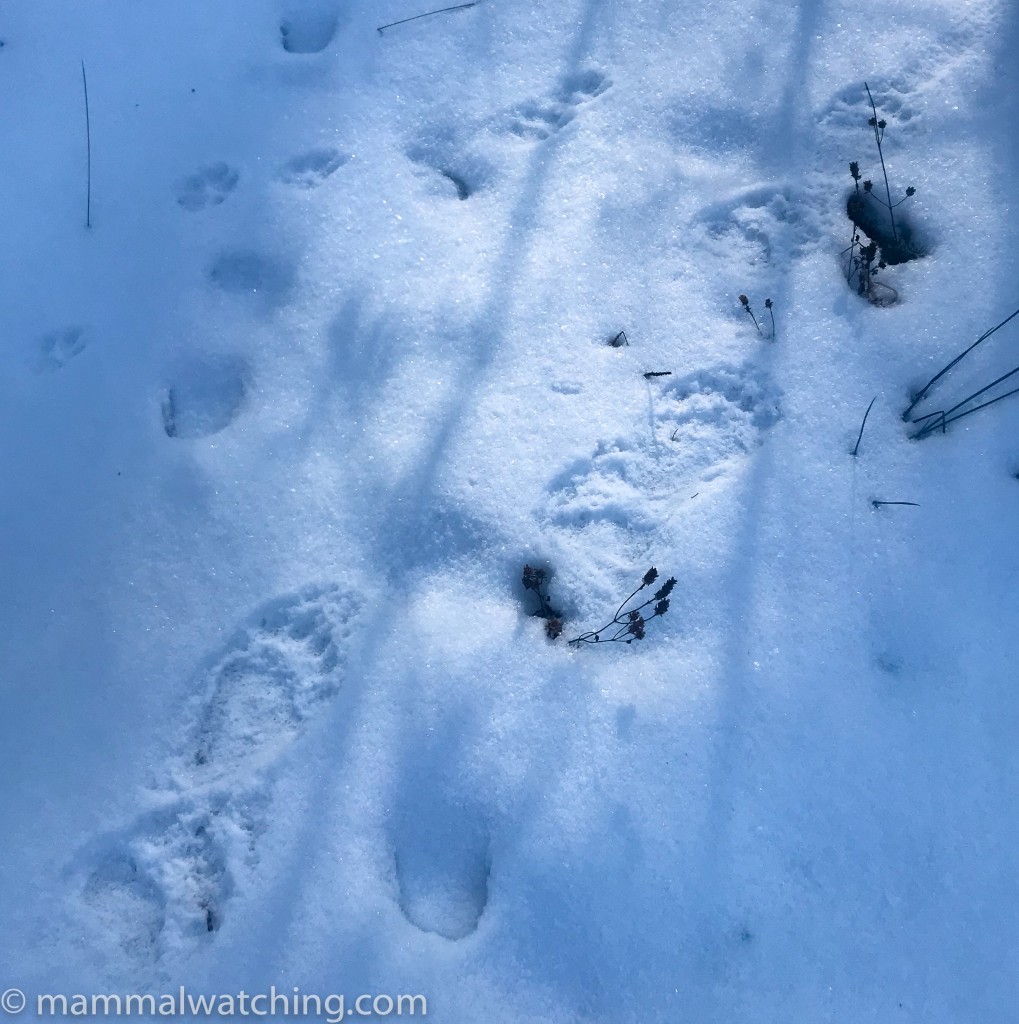
Fresh Lynx (back) and Bear (front) tracks
The Eurasian Lynx is elusive across most of its range. One Lynx can wander over many hundreds of square kilometres and, as ambush hunters, they prefer dense cover and are, of course, adept at secrecy.
I have watched with interest how the mammalwatching world has gotten better at finding them. I suspect Hemis National Park in Ladakh offers the best chance I know of seeing one, if you can divert your attention from the Snow Leopards. But that is a long, tough trip and the Lynxes seem to be even higher up the mountains than the Snow Leopards. The Tibetan Plateau can also be good but I wasn’t going to be able to visit China anytime soon. In Europe, Poland’s Bialoweiza was once recommended as the place to try. Estonia has become a recent favourite. And Switzerland and Sweden have been rising up the charts as popular Lynx destinations. But I am not convinced that any one place is all that better than the rest (though when I was in Transylvania I learned a Dutch researcher – Mark Kaptein – was having a ridiculous amount of Lynx success in Estonia the same week. More on this later).
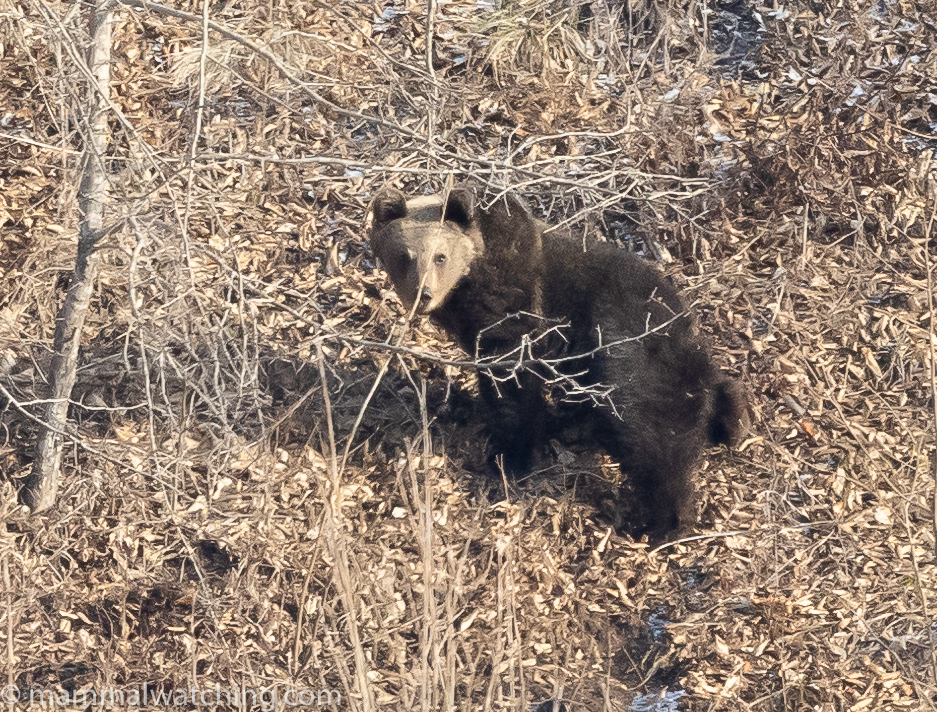
European Brown Bear, Ursus arctos arctos
Nor am I aware of any super-successful tactic to find them other than driving many many miles through their habitat day and night. The biggest mammalwatching breakthrough for this species is probably the realisation that late February and early March offers the best chances to see them. During this two or three week period they are vocal and seem far more active judging by camera trap records from Romania at least. Indeed while I was in Transylvania my social media feed lit up with Lynx sightings in Sweden, Estonia and Minnesota (Charles Foley’s pictures were particular gripping). The world’s Lynxwatchers were out in force.
Looking For Lynxes In Transylvania: The Set Up

Looking for a needle in a haystack
János is one of several top birders I know who have had been graced by the hand of the mammalwatching god during COVID. He still loves his birds of course (and we even stopped – briefly! – to look at them on occasion on this trip). But two years of travel restrictions coupled with a thirst for new species had shown him the mammalian light. He has also gotten sickeningly good, far too quickly, at finding mammals. See his recent Romania mammal tour report for proof.
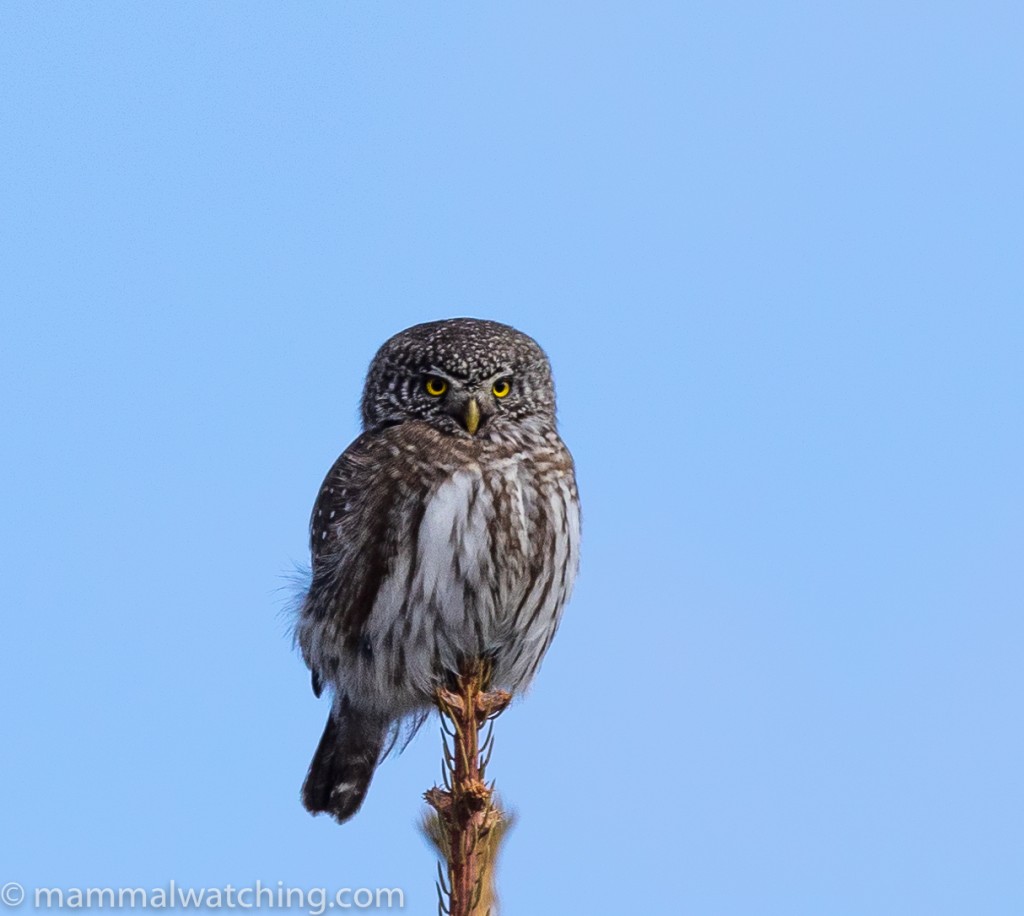
Eurasian Pygmy Owl. One of several ‘good’ birds according to János
Building on the experiences of the Sakertours 2021 recce trip, János had hatched a high-tech plan to find us a Lynx. We had multiple thermal scopes and a pair of thermal binoculars at our disposal. Twenty camera traps in the forest were recording the local Lynx movements, with half of them emailing images in real time. He even floated the idea of launching a thermal camera on a drone. The last time so much kit was deployed to find a mammal the US were hunting Bin Laden. My wife put it well: I was at a mammalwatching expo.
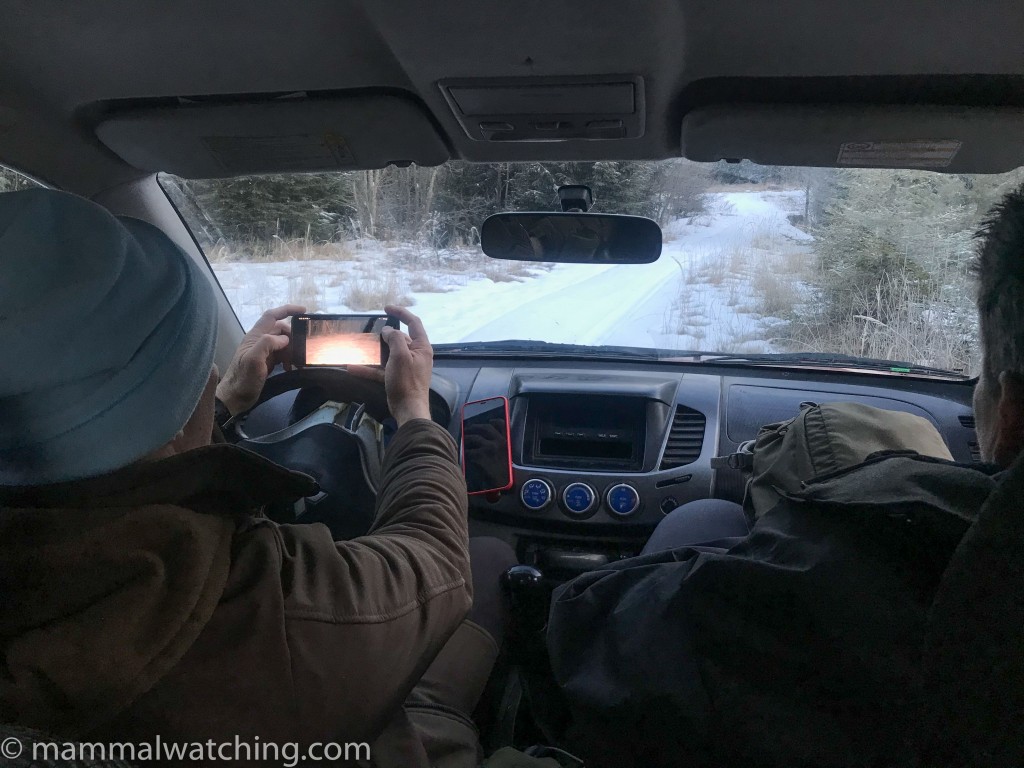
A new camera trap image arrives
János and the Sakertours team had two excellent local guides to help us. Their Lynx man, Goci, was unstoppable. He took the photo at the top of this report. I didn’t get much of a chance to talk to Goci. He was always running somewhere. Usually following the tracks of a Lynx. The only times I saw him stationary was at the side of the road waiting for us to drive past. He would say something excited and Hungarian to Janos and run off.
Zsolt Babos, who owns the Harghita Bear Lodge where we were stayed, also instilled a good deal of Lynx-finding confidence, and accompanied us on several drives to help spot and offer strategic advice. If I could pick any two people to help find me a Carpathian Lynx, it would be Zsolt and Goci.
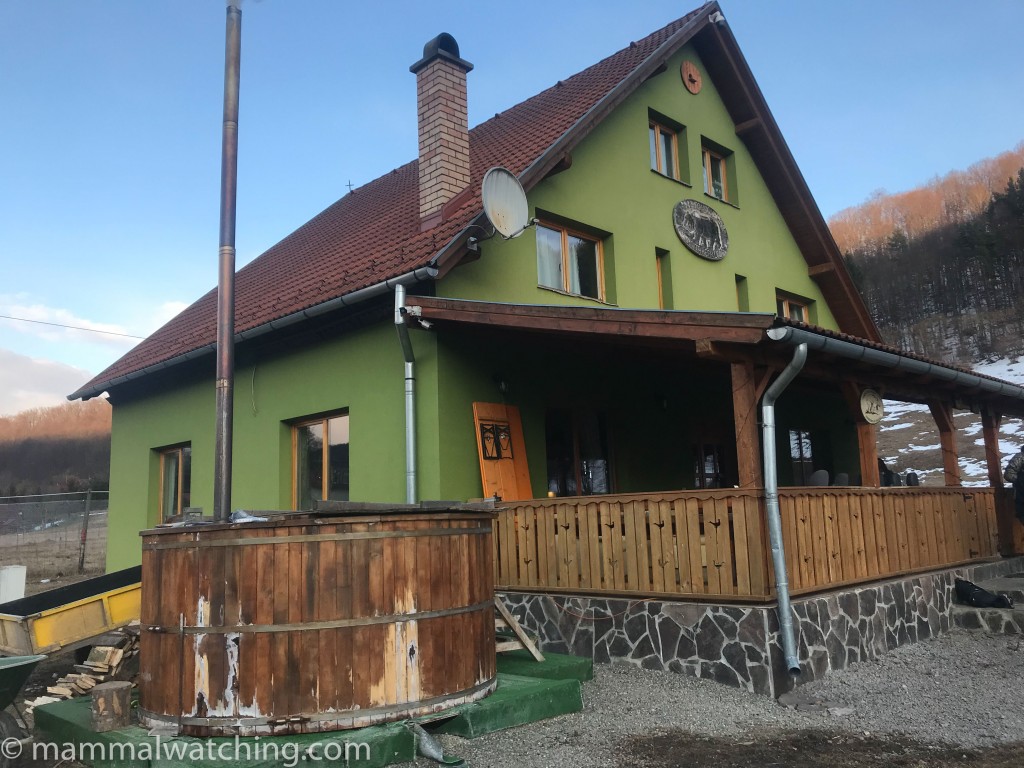
Harghita Bear Lodge
It was unusually cold for mid-March while we were there, with temperatures seldom getting above freezing, and falling to below -12C most nights. It also snowed a little every day. Opinions were divided on whether the cold was affecting Lynx activity. But the fresh snow provided a psychological boost at least, helping to remind us how many Lynxes were walking the roads.
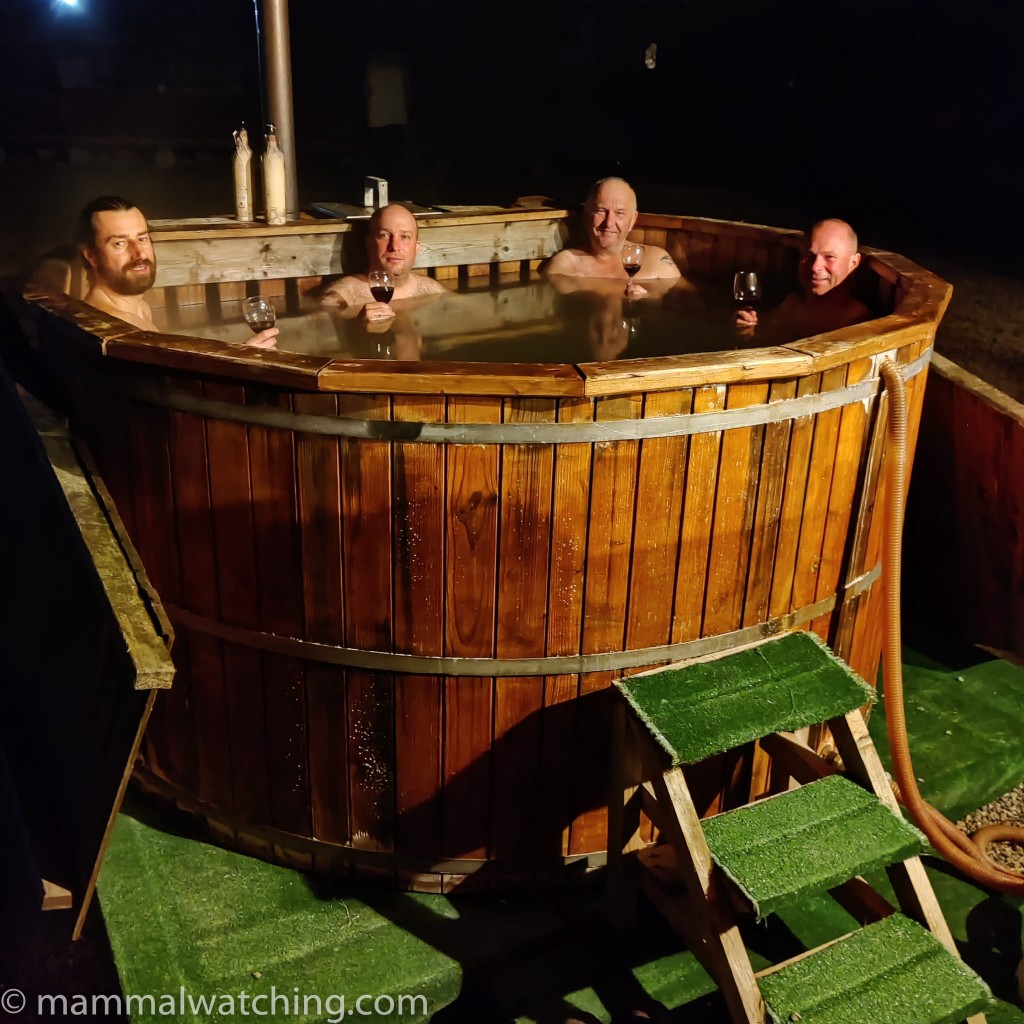
What a wonderful night for a bromance
We spent 6 nights at Zsolt’s cosy Harghita Bear Lodge. Cosy rooms, good food and a hot tub for Moldovan wine and Transylvanian brandy tasting.
The Trip
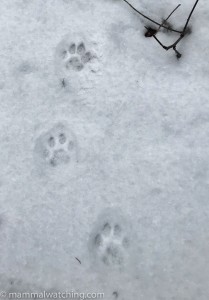
Fresh Lynx tracks
Lynx watching began on Saturday evening as soon as our group arrived from Bucharest, about five hours away. It finished Friday morning. We focused on two valleys close to the bear lodge which were being used by at least six Lynxes we thought.
Sakertours had run a Lynx photography trip over the preceding week and so had already set up the camera traps to gather intel on Lynx movements. A mother with two cubs, and at least three males were using the two valleys. One or more Lynxes were appearing on the camera traps every day or two. There were plenty of fresh tracks. The day before we arrived Goci, Lynx Finder General, had photographed a cat at the side of the road. Our odds were narrowing, though we still needed a lot of luck.
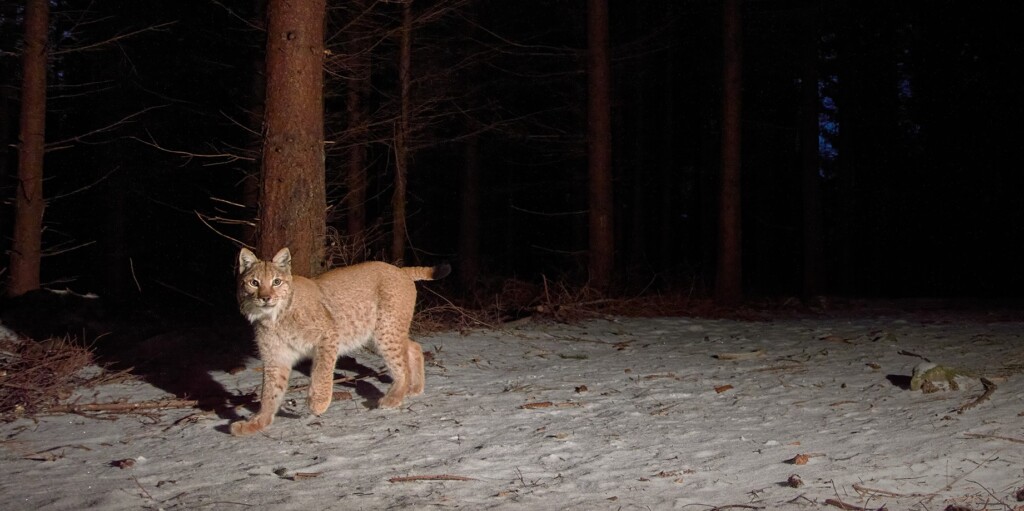
Carpathian (Eurasian) Lynx, Lynx lynx carpathicus. DSLR camera trap photo by Zoltan Nagy
Our daily routine was set according to the latest intel. But we spent most of our time patrolling the two valleys in vehicles: staring through thermal scopes, searching for tracks and hoping to hear a Lynx calling. It wasn’t clear from the camera traps whether day or night was a better time to look (I suspect it doesn’t make much difference) and most days we left the lodge at 06.30, returning for a two hour lunch break, before returning to the forest until well after dark (usually getting back between 2200 and 0100).
We were split between two vehicles: Janos’s SUV and a minibus. Zoltan Gergely Nagy, a Sakertour guide and pro photographer, drove the bus, and Szabi Kovacs, a hard core thermal scoper and guide, also from Sakertours, always had a seat in the bus too. The rest of us rotated between the heated seats of Janos’s car and the frozen wastelands of the minibus (hard to keep it warm when both doors were always wide open to aid the thermal scoping). Meanwhile Goci was running up and down the mountains tracking Lynxes and Zsolt, from the bear lodge, came out on several trips. It was quite a task force with amore thermal scopes than people.
One morning we took a break from Lynx watching to visit a cave two hours from the lodge where several species of bats were hibernating.
The Mammals
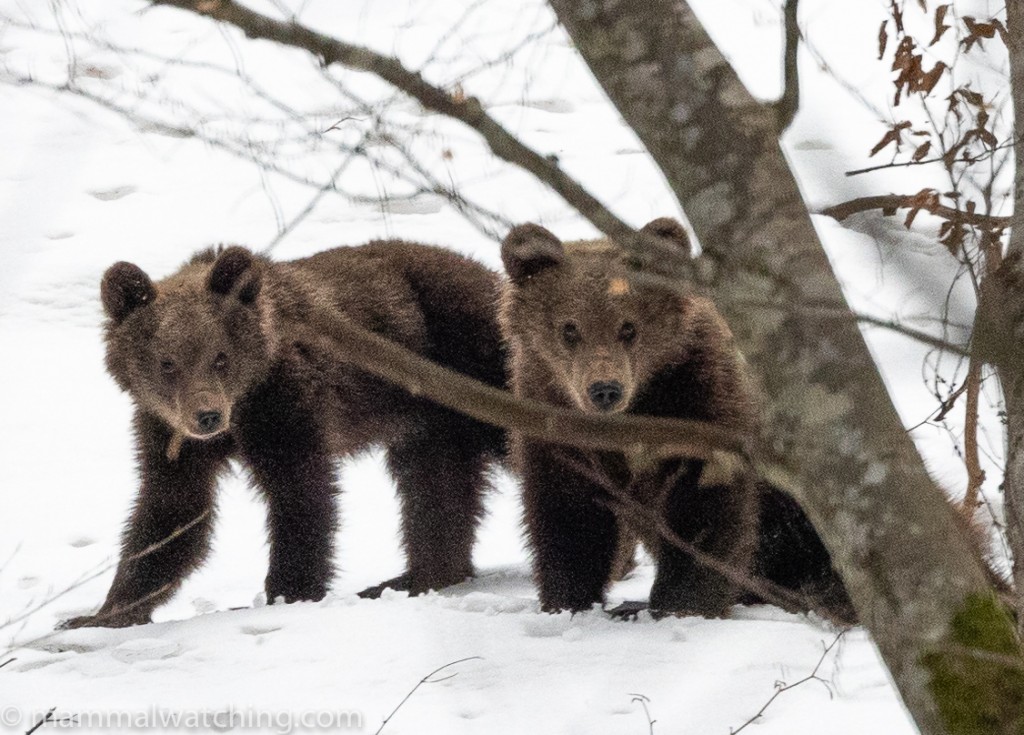
European Brown Bear, Ursus arctos arctos
Wolf
We didn’t see Wolves and didn’t make any effort to see them. Though we did see plenty of fresh tracks. It seems the local Wolves are warier of people than the local Lynxes and are seldom spotted in the forest. Probably the best way to see them is to focus on the edges of villages after dark, when wolves often come to hunt deer (the 2020 Sakertours mammal trip found a pack).
Red Fox
We saw several during the day and night. One emerged onto the road while we had stopped, hoping a nearby Lynx would appear. This caused several of us to have minor heart palpitations.
Carpathian Brown Bear
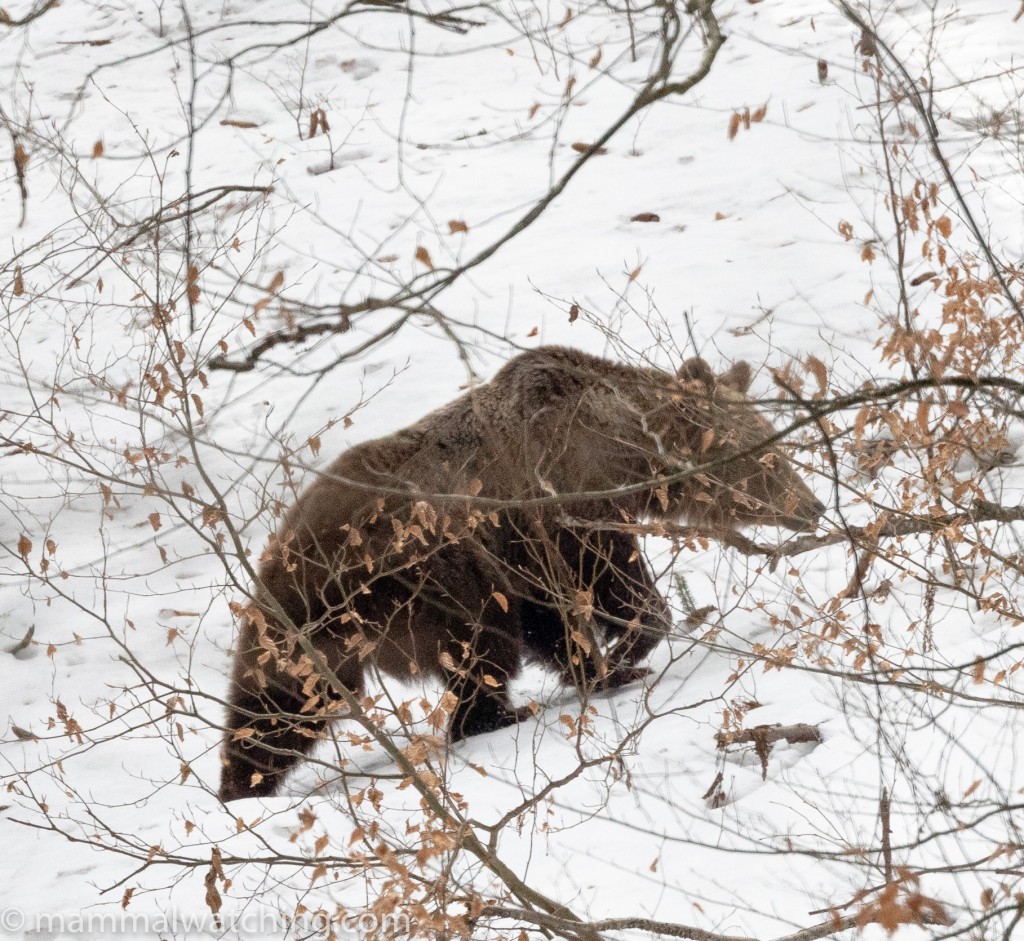
European Brown Bear, Ursus arctos arctos
We saw bears three times in the mid to late morning and saw their tracks every day. Janos had two cubs at night through his thermal scope: they emerged from the edge of the forest into a clearing while we were waiting for a Lynx. Convinced we had just missed a pair of Lynxes we were relieved to find bear tracks where the “lynxes” were standing. Bears are easy to find in the area around hides where food is put out for them. In this forest they usually hibernate only for a month or two at most.
Roe Deer
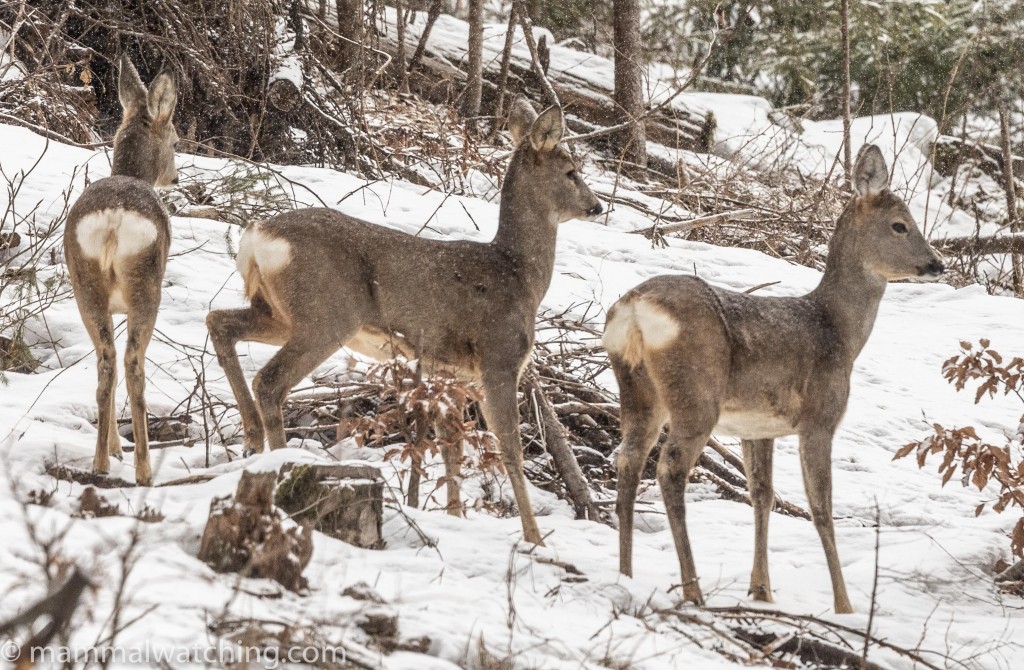
Western Roe Deer, Capreolus capreolus
Very common with multiple animals seen on every drive. Roe Deer are a Lynx’s favourite food.
Red Deer
We saw fewer Red than Roe Deer but still saw animals every day. We saw them more often at the edge of the forest than deep inside.
Brown Hare
We saw two or three at night.
Red Squirrel
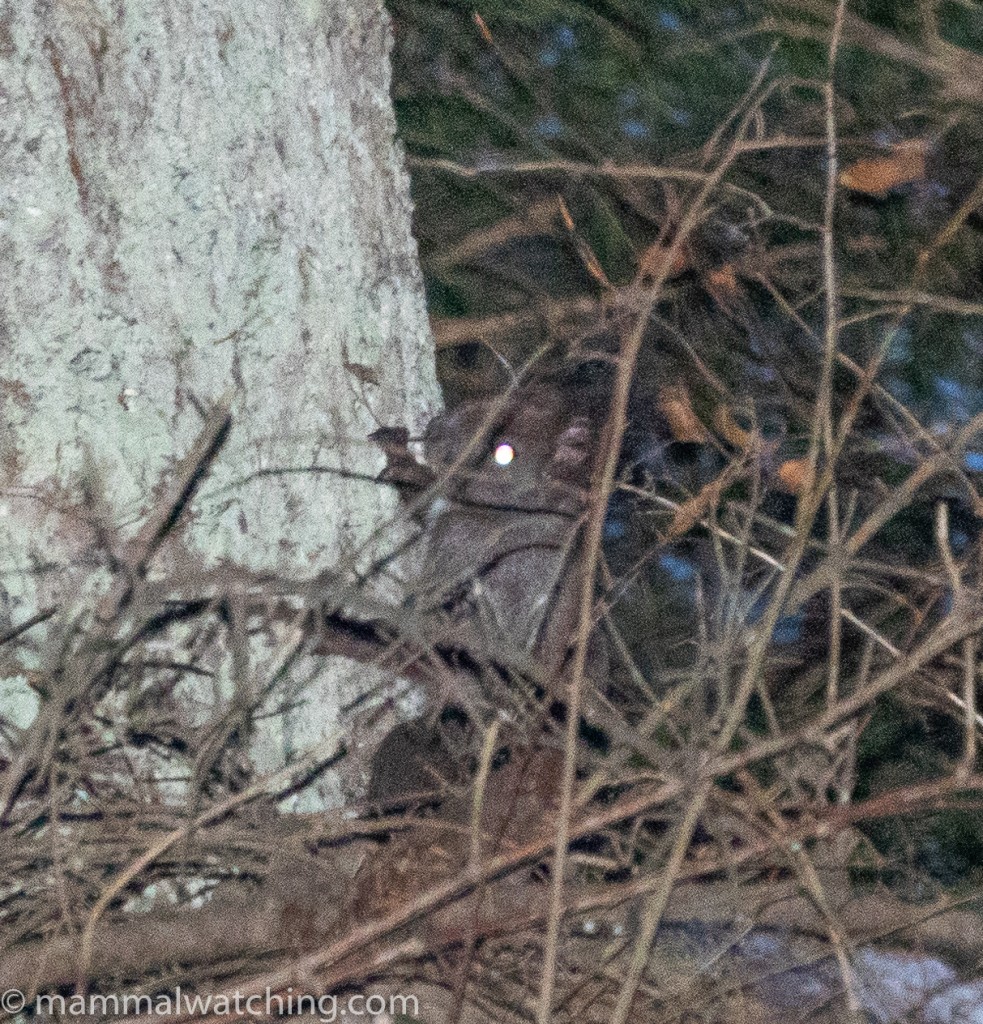
Record shot of a dark morph Red Squirrel, Sciurus vulgaris
We saw several Red Squirrels, all of them an attractive dark morph.
Bats
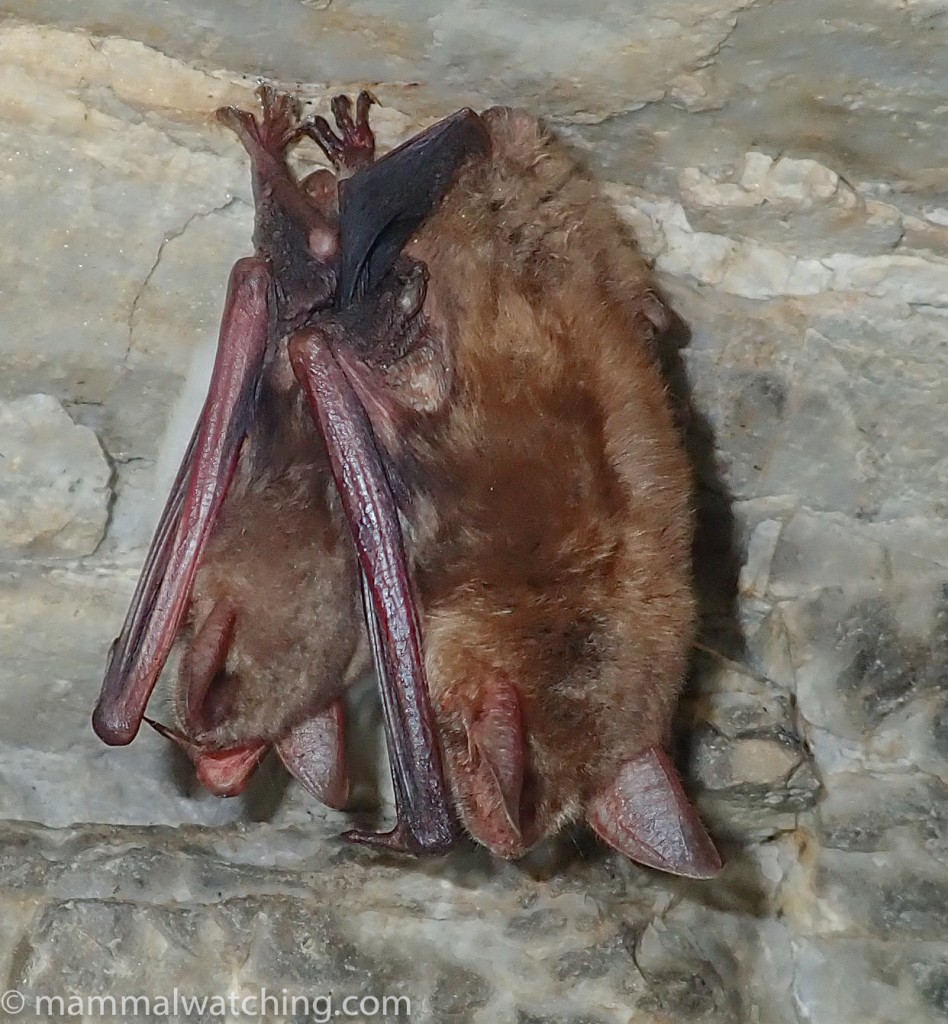
Greater Mouse-eared Bats, Myotis myotis
A morning visit to a locked cave with a local bat expert (who had the key!) was our one break from Lynx patrol.
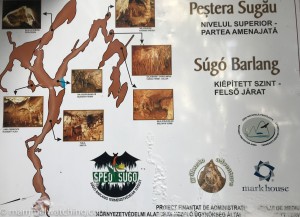
The caves are visited by tourists and the easily accessible main chamber had a few Greater and Lesser Mouse-eared Bats and some Greater Horseshoe Bats.
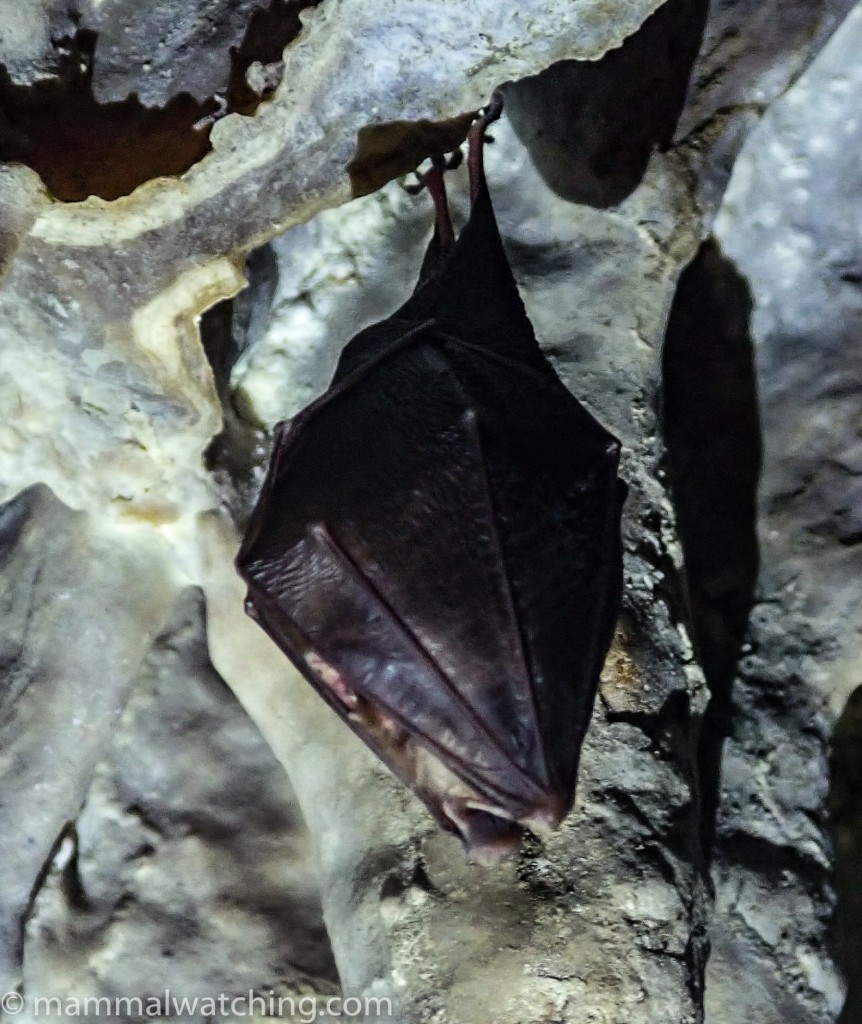
Lesser Horseshoe Bat, Rhinolophus hipposideros
A hundred metres lower down the hillside a second entrance was much tighter to enter. I said that if I had eaten a cookie inside the cave I wouldn’t be able to get out again. People thought I was joking. There were some different bats inside with Western Barbastelle, Brown Long-eared Bat and Serotine taking the morning’s bat list to 6 species. Northern and Parti-coloured Bats are among the other species occasionally found here in winter.
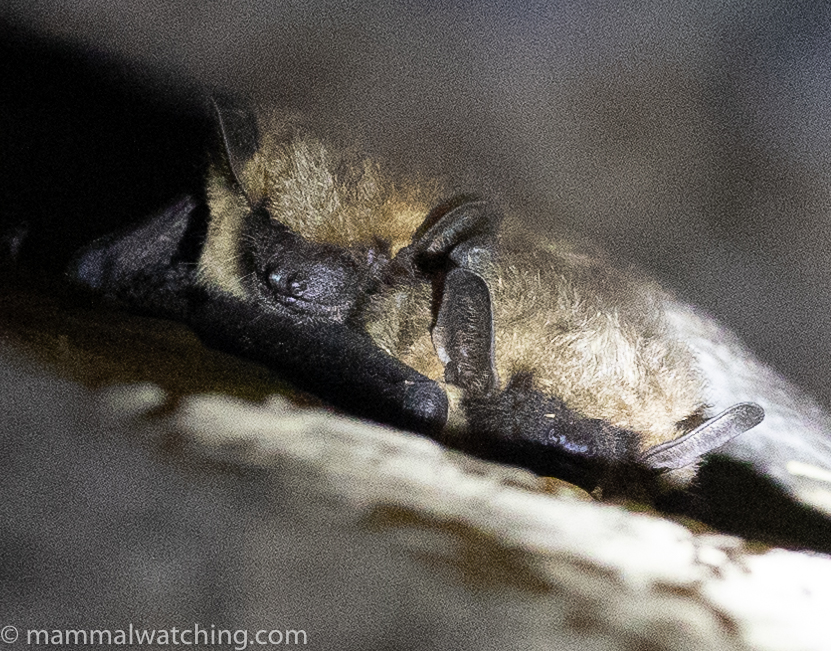
Serotine, Eptesicus serotinus
Yellow-necked Mice
We saw several apodemus mice at night and another in the daytime on a branch. We didn’t see any well enough to be sure they were Yellow-necked and not Wood Mice. But the local guys seemed pretty sure there were only Yellow-necked Mice here.
Bank Vole
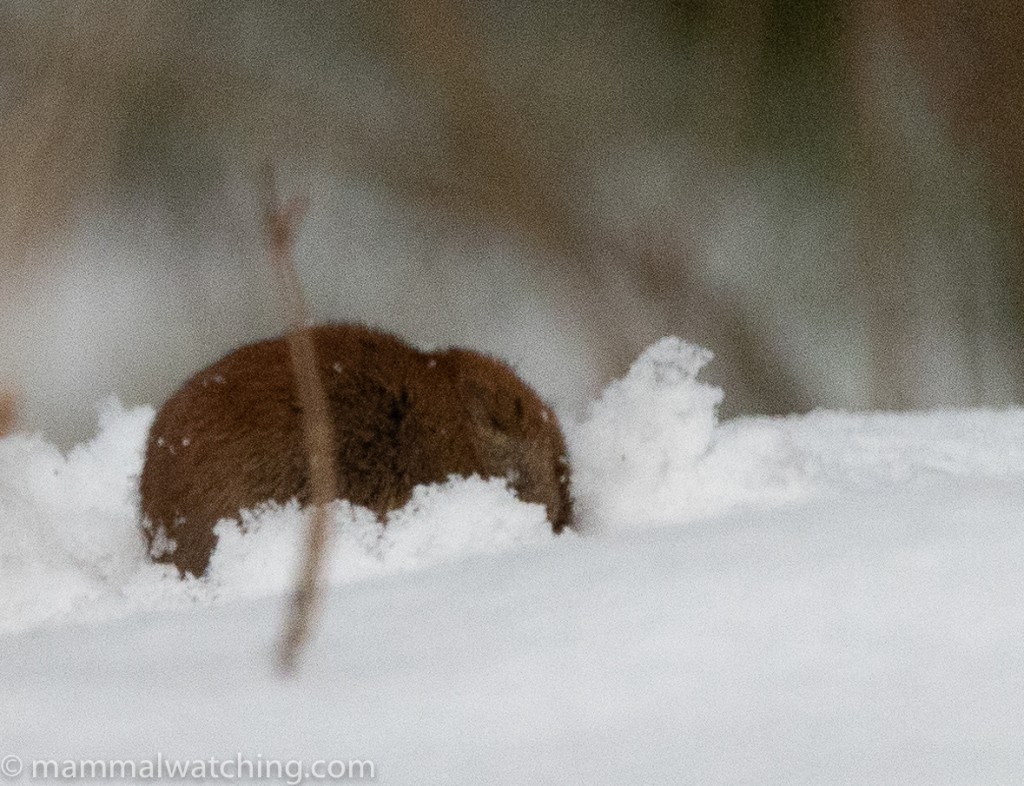
Bank Vole, Clethrionomys glareolus
One foraging in the snow mid-morning.
Lynx
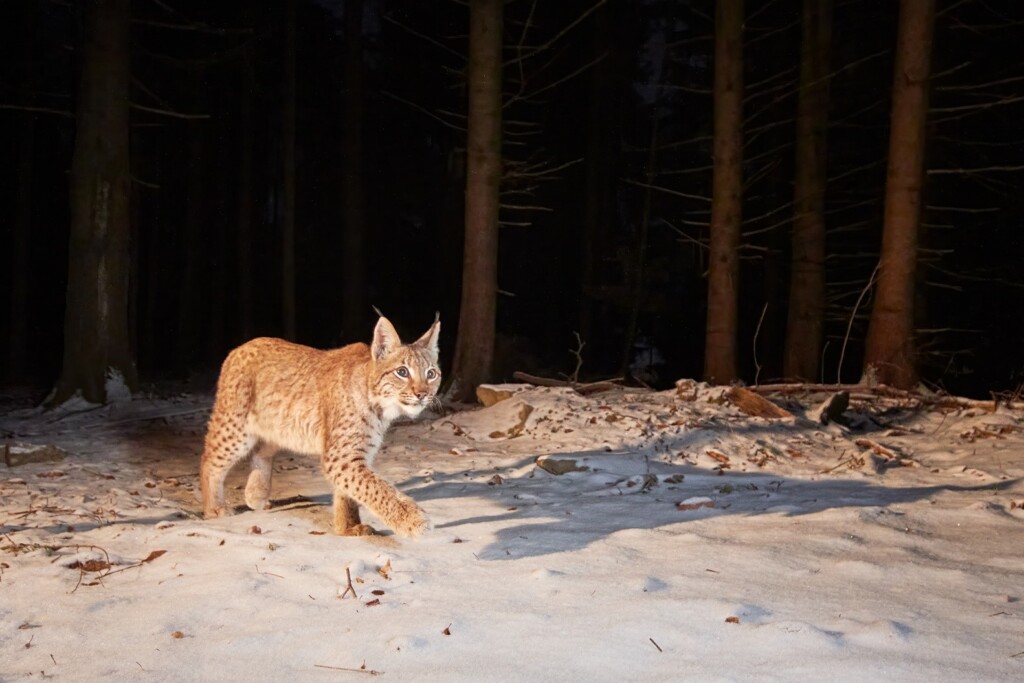
Carpathian (Eurasian) Lynx, Lynx lynx carpathicus. DSLR camera trap photo by Zoltan Nagy
I am not really sure what I was expecting when it came to our chances of actually seeing a Lynx, but I was surprised by our number of “almost saw a Lynx” moments, and by the quantity of fresh tracks.
We had a near miss every 48 hours or so. On Friday, the day before the trip began, Goci photographed a Lynx at the side of the road. On Sunday morning, the first full day of the trip, a Lynx walked past a camera trap as we were driving towards that bit of forest. We missed it by 15 minutes. On Tuesday night at 9pm the two guides sitting on the left of each vehicle saw a Lynx sitting close by the road through their thermal scopes. It ran off before anyone else could see it. Later that same evening we heard a Lynx calling from 200-300 metres away. And on Thursday night a Lynx walked past a camera trap 20 minutes after we left the area.
So close but so far.
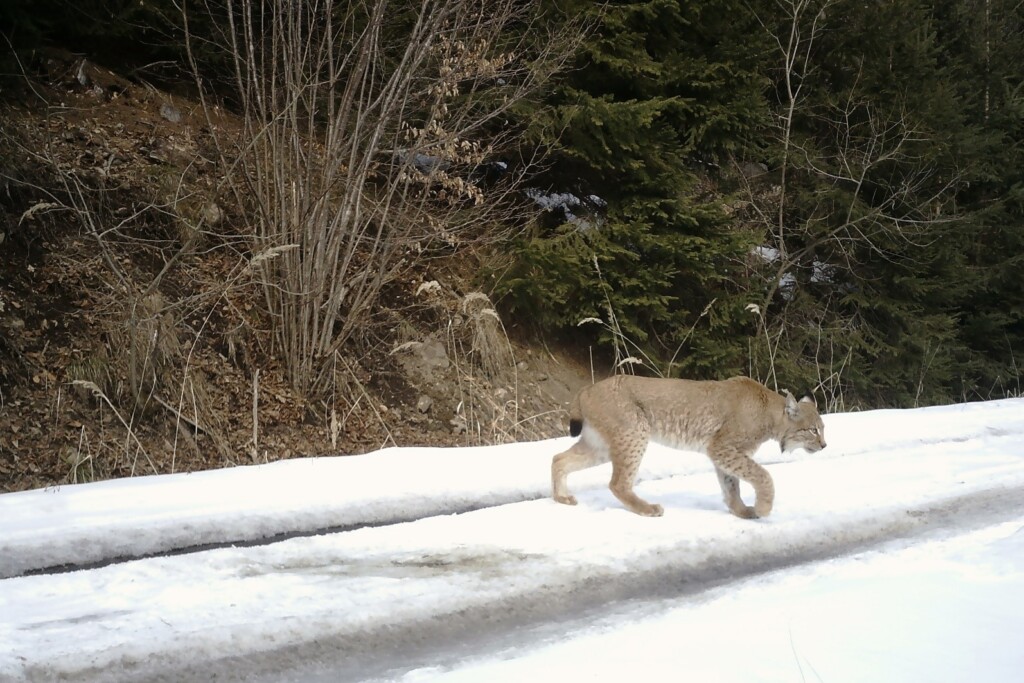
Carpathian (Eurasian) Lynx, Lynx lynx carpathicus. Camera trap photo
By Friday, our last day, I’d resigned myself to going home Lynx-less.
At 8pm that night we saw a herd of Red Deer, strung out in the forest along a steep bank. There were 20 or more animals above the road: by far the largest deer herd we had seen all trip. I checked each animal out with my thermal scope as we cruised past: deer, deer, deer … wait.
At the very back of the herd was a slightly different looking heat trace. It was partially obscured by a tree on either side of it, but it looked like an animal sitting down in a non-deer-like way. I put the flashlight on it. Perhaps this was a mistake, but it was a tactic we had collectively agreed to follow after most of us missed the Lynx three nights earlier.
Bright eyeshine stared back at me. The animal stood up and turned through 90 degrees. I saw it in profile. A wildcat? No, too big. A wolf? It turned to look straight towards us for a second. Large triangular erect ears. A white throat and broken black markings across the chest. Lynx!
And then it turned to slink up the slope and within a second was swallowed by the forest.
I should have been ecstatic. But I wasn’t. This was not the 2000th mammalgasm I had been longing for.
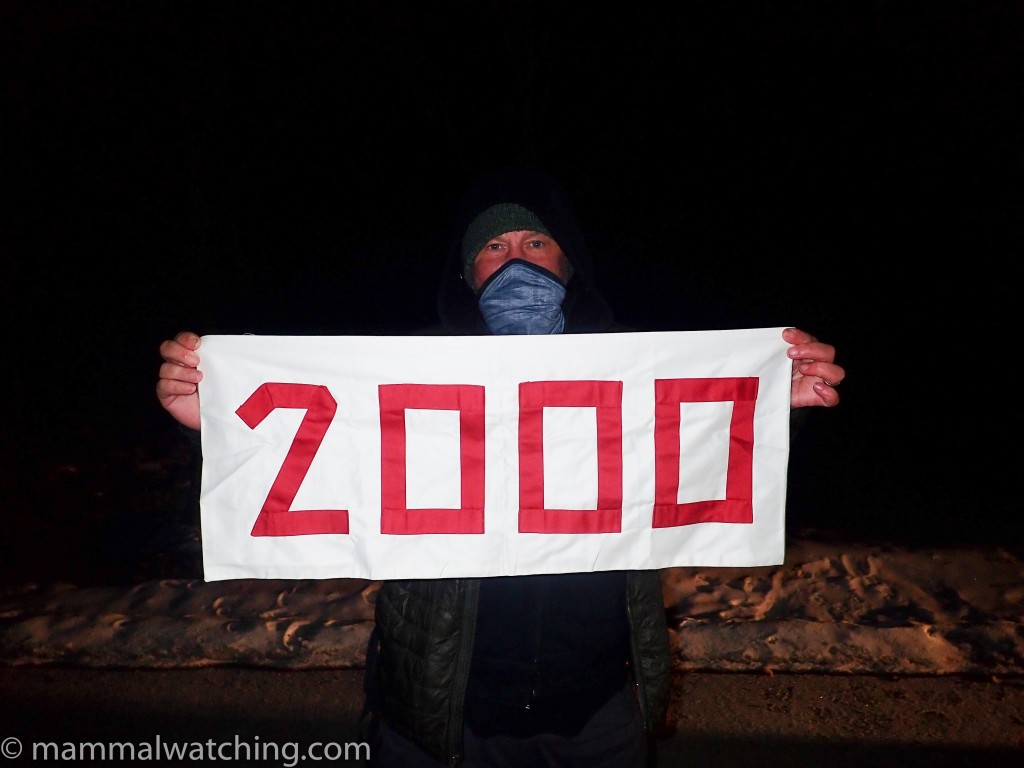
First, I felt terrible that none of the others on the tour had seen it. Only János got enough of a look at the beast to feel confident it was a Lynx (he thought it was likely stalking the young Red Deer which they are known to do). Zsolt saw it very briefly. No one else saw it at all. That only I saw it was not through any skill or speed on my part. I was simply lucky to have been sitting on the left hand side of the leading vehicle and so I got onto the animal first. That meant I was also able to position myself and our car to see it through a very narrow window in the trees.
Second, I was immediately full of self-doubt. Was I hallucinating? There was not even snow on this slope to check for tracks. But the longer I thought about it the more I was convinced. János also reassured me. I would of course have liked to have seen it for longer, closer, and with better illumination (I couldn’t see the ear tufts for example). But it would be churlish to complain. I will shut up.
Birds
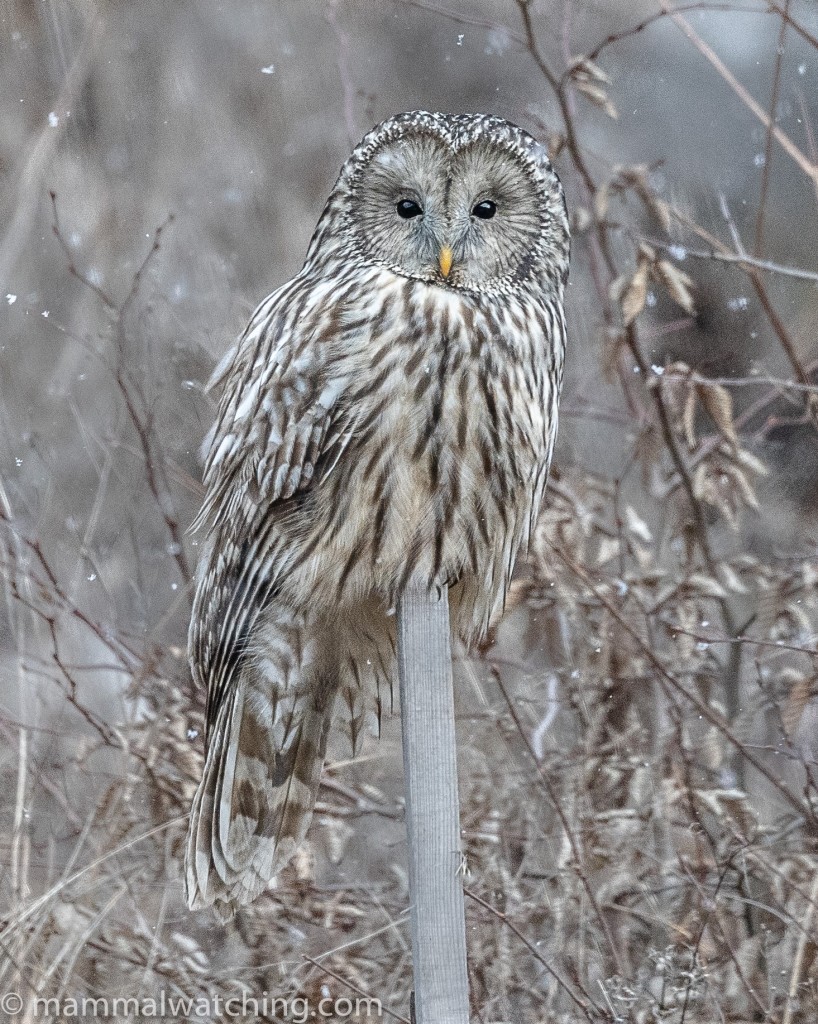
Ural Owl
No bird list. Sorry! But I will mentioned some birds that János said were ‘good’ including this beautiful Ural Owl. Three other notable species were multiple Hazel Grouse (usually first spotted with the thermal scopes), Eurasian Pygmy Owls and a Three-toed Woodpecker.
So you want to see a Lynx…?
I am not sure whether we were lucky or unlucky on this trip. We spent over 70 hours driving slowly through Lynx habitat that week. Were we lucky to have gotten so close to several animals? Or were we unlucky to have not had killer views of one of them? I don’t know.
I do know that just a few years ago much of the equipment we were using would have been unthinkable. SLR cameras emailing pictures in real time and thermal scopes galore. This helped our chances enormously, as did Goci and Zsolt’s local knowledge. The forest also contains what must be a ‘high’ density of Lynxes (relative to many places). The animals also seem quite tolerant of people: Transylvanian Lynxes, we were told, generally stroll rather than run when they encounter people. So there is lots to recommend Transylvania as a place to look, and Sakertours as the people to look with.
On the other hand, I suspect some other countries might have habitat that is a bit more amenable to Lynx watching. While we were on our trip, Mark Kaptein had ten Lynx sightings in Estonia. This is exceptional for Estonia and perhaps the Lynxes are having a bumper year there. I asked him and he partly attributed his amazing week to Estonia’s network of forest tracks and patchwork of lowland forest and meadows that offer decent chances of getting close to a Lynx that is calling, or of spotting one out in the open.
I am sure that there is still much to learn, particularly around how to see an animal when it is close by. Finding a fresh kill would be a massive head start. But, because there are so many bears here, a kill lasts no more than 48 hours.
On several occasions we tried waiting at strategic road junctions in the hope that a Lynx we knew was nearby – based on a camera trap picture or tracks – would stroll past. These stakeouts were selected on an understanding of the routes Lynxes often take. It may be a solid strategy but it didn’t work for us on this trip. I wish I could figure out how to coax an animal into view, especially if it is calling close by. Perhaps some combination of Lynx scent marking, squeaking or call playback might be effective if done carefully and ethically.
But perhaps luck will always play the major role in seeing this animal. And perhaps that would be for the best, so that any Eurasian Lynx sighting will always remain something very, very special.
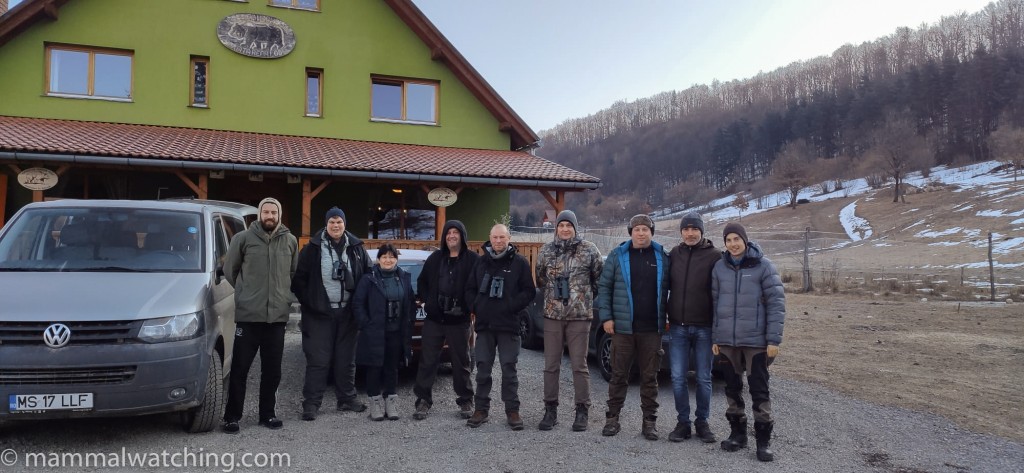
Thank you to János, Zoltan and Szabi from the Sakertours team and Zsolt and Goci from Harghita. True wildlife professionals and great company too. And a very big thanks to my fellow mammalwatchers on tour: Sjef, Jan-Joost, Karine and Geert. They were fun and considerate travel partners, and – most importantly – hugely energetic Lynx searchers, despite very long days and very cold temperatures. As Szabi said often: “No pain, no gain!”.
Trip List
European Hare (Lepus europaeus)
Eurasian Red Squirrel (Sciurus vulgaris)
Bank Vole (Clethrionomys glareolus)
Yellow-necked Field Mouse (Apodemus flavicollis)*
Lesser Horseshoe Bat (Rhinolophus hipposideros)
Serotine (Eptesicus serotinus)
Western Barbastelle (Barbastella barbastellus)
Brown Big-eared Bat (Plecotus auritus)
Lesser Mouse-eared Bat (Myotis blythii)
Greater Mouse-eared Bat (M.myotis)
Eurasian Lynx (Lynx lynx)
Red Fox (Vulpes vulpes)
Brown Bear (Ursus arctos)
Red Deer (Cervus elaphus)
European Roe Deer (Capreolus capreolus)
15 species.
*We saw several Apodemus mice though not well enough to ID to species level. The guides believed only Yellow-necked Mice were present in the forest.
4 Comments
-
-
Maurice Tijm
Very amusing and exciting report.
Great promo for Romanias wilds and the local expert knowledge.
Crazy attempt and you as a celeb on board to make it all the more special 😀 ;-). Congrats on this absolute top mammal and your 2000th mammal. Pitty the views were not better. -
Lars Michael Nielsen
Congrats on nr. 2000 what an achievement! Great report one can almost feel the frustration through the labtop screen…
Regarding the Estonian observations. Do you know were the lynxes were seen? I’m going there a littl eater in April. I know it’s not prime time for Lynx but i’d like to give it a shot.
All the best.
Lars Michael
Leave a Reply
You must be logged in to post a comment.


Antee
Welcome to the exclusive club of “Seeing all the four Lynx species on earth”-club 🙂
Well done!
Which mammal will take place on the top 21 list instead of Eaurasian Lynx now? 🙂